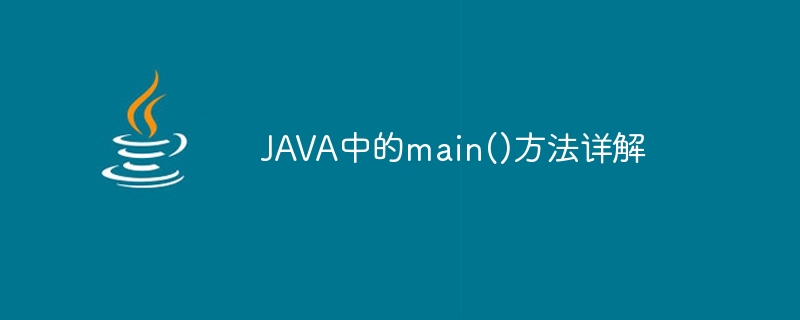

Detailed explanation of the main() method in JAVA
In a JAVA program, the main() method is the entrance to the program and the starting point for program execution. The main() method is a necessary method for all JAVA applications. Every independently running JAVA program must contain the main() method.
The definition format of the main() method is as follows:
public static void main(String[] args) {
// 程序代码
}Next, we will analyze each part of the main() method in detail.
public static void main(String[] args) {
// 程序代码
}In the main() method, we can write any legal JAVA code, call other methods, create objects, and perform various operations.
The following is a sample program:
public class MainMethodExample {
public static void main(String[] args) {
System.out.println("Hello World!");
}
}In the above sample program, we created a class named MainMethodExample and defined a main() method in the class. In the main() method, we use the System.out.println() method to print a "Hello World!" message.
Run the program in the command line, you can see that the program outputs the "Hello World!" message.
Summary:
The main() method is the entrance to the JAVA program, and its format is fixed to public static void main(String[] args). Any legal JAVA code can be written in the main() method. As the starting point of the program, various operations can be performed and other methods can be called. When starting the program mainly through the command line, you can pass parameters to the main() method.
The above is the detailed content of An in-depth discussion of the main() function in JAVA. For more information, please follow other related articles on the PHP Chinese website!




